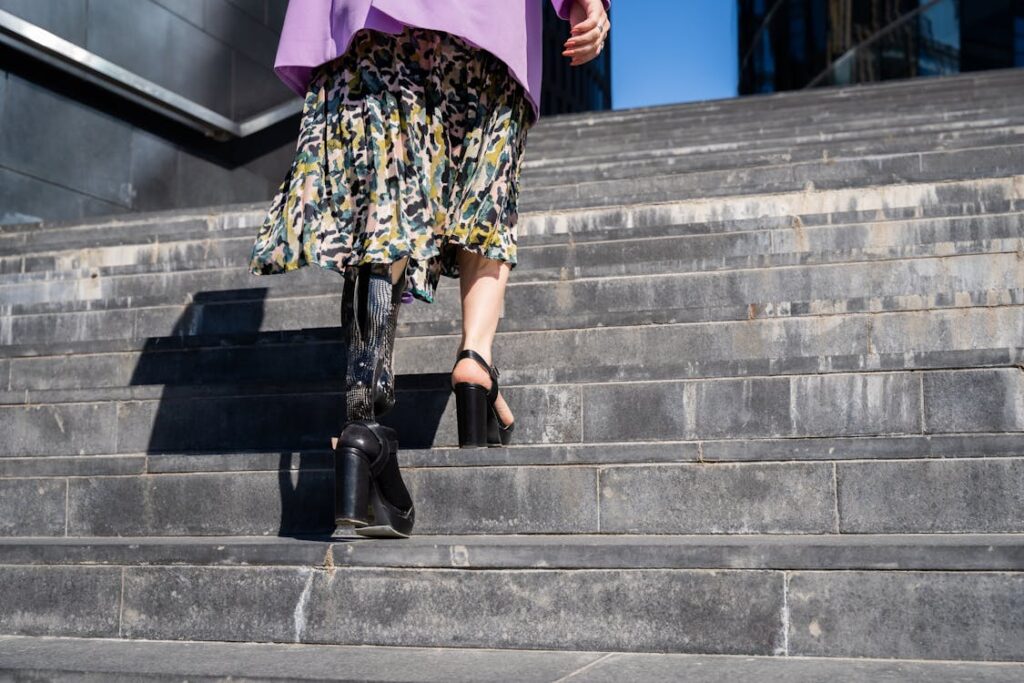Advancements in prosthetic technology have transformed the world of sports, allowing athletes with limb loss to compete at elite levels. Myoelectric prosthetics, which use electrical signals from muscles to control movement, have been a game-changer. These high-tech limbs provide greater precision, strength, and natural movement, giving athletes the ability to perform complex motions with ease.
For competitive athletes, every fraction of a second and every ounce of control matters. Myoelectric prosthetics bridge the gap between mechanical function and natural body mechanics, allowing users to react faster, train harder, and push their limits just like any other athlete.
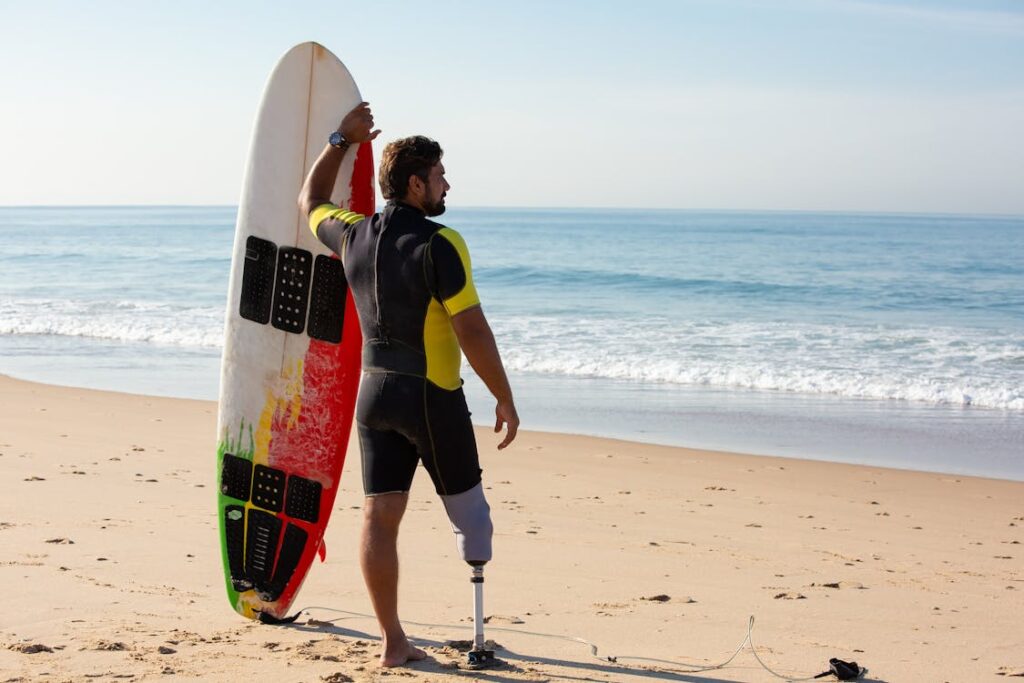
How Myoelectric Prosthetics Work in Sports
Myoelectric prosthetics operate using electrical signals generated by the muscles in the residual limb. These signals are detected by electrodes placed inside the prosthetic socket and converted into commands that control movement.
Unlike traditional prosthetics, which rely on body harnesses or mechanical joints, myoelectric limbs allow for more natural and intuitive motion, making them especially beneficial in sports where speed, precision, and control are critical.
Athletes using myoelectric prosthetics can engage in a wide range of sports, from track and field to weightlifting, cycling, and martial arts.
The key advantage lies in their ability to replicate natural limb function, enabling movements that were previously difficult or impossible with standard prosthetics.
By fine-tuning muscle signals, athletes can grip objects, adjust pressure, and react quickly, which is crucial in competitive environments where split-second decisions can determine the outcome of a match or race.
Enhancing Performance with Myoelectric Prosthetics
In competitive sports, strength, endurance, and precision are non-negotiable. Myoelectric prosthetics help athletes achieve all three by offering real-time adaptability.
Unlike passive prosthetics, which offer limited movement, myoelectric limbs allow users to control grip strength, wrist rotation, and elbow flexion, providing the kind of dexterity needed in sports like tennis, archery, and rock climbing.
For sprinters and runners, myoelectric legs provide enhanced control over stride length and force distribution, allowing for a more balanced and explosive push-off.
In combat sports, such as boxing or mixed martial arts, athletes benefit from the ability to control punches, grips, and defensive maneuvers, which was nearly impossible with older prosthetic models.
Training with a myoelectric prosthetic also improves muscle engagement and coordination, as athletes must develop the ability to contract specific muscle groups to trigger desired movements.
This not only strengthens the residual limb but also enhances overall athletic performance.
Overcoming Challenges with Myoelectric Prosthetics in Sports
While myoelectric prosthetics provide remarkable advantages, they also present unique challenges that athletes must learn to manage. One of the biggest hurdles is adaptation time.
Because myoelectric limbs rely on muscle signals, athletes must undergo intensive training to master their prosthetic’s response. The learning curve varies depending on the complexity of movement, the sport being played, and the athlete’s level of experience.
Another challenge is battery life and durability. Unlike mechanical prosthetics, which function through purely physical movement, myoelectric limbs require consistent power sources.
This means athletes must be mindful of battery levels during training and competitions to avoid unexpected failures. Additionally, sports that involve high-impact collisions or extreme weather conditions can put strain on the internal electronics, requiring extra care and maintenance.
Despite these challenges, ongoing technological advancements continue to improve the reliability, responsiveness, and durability of myoelectric prosthetics.
With the right training, adjustments, and support, athletes can maximize their performance while minimizing potential setbacks.
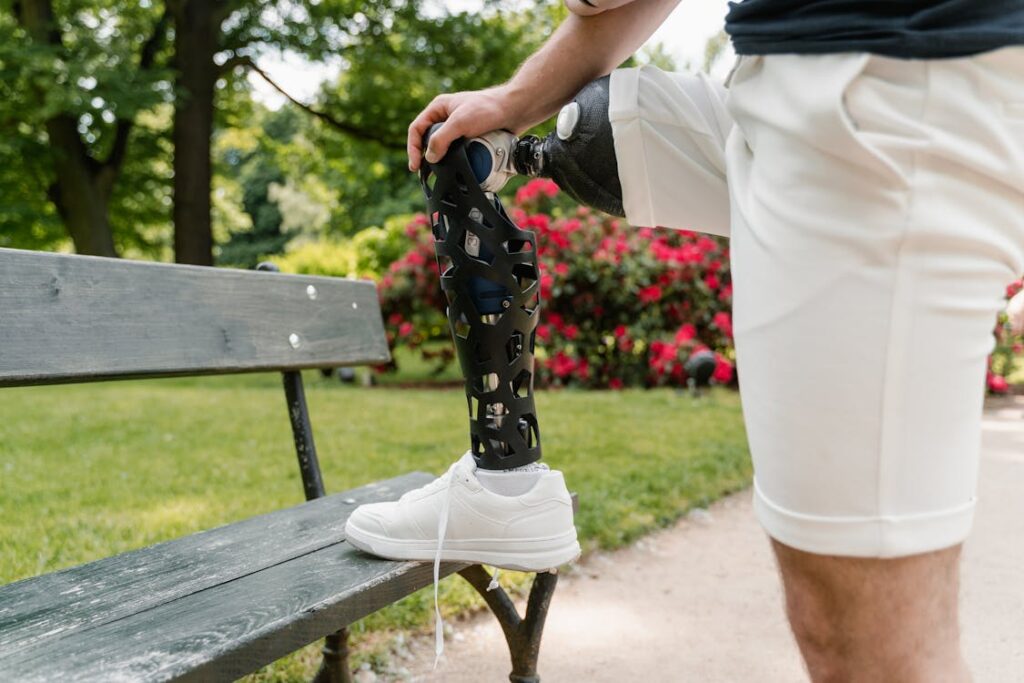
Myoelectric Prosthetics in Different Competitive Sports
The versatility of myoelectric prosthetics has allowed athletes to participate in a wide range of competitive sports, each requiring unique adaptations.
From precision-based disciplines like archery to high-impact sports like wrestling, these advanced prosthetics are helping redefine what is possible for athletes with limb loss.
Track and Field: Speed and Endurance
In sprinting and distance running, balance, stride efficiency, and power generation are crucial. Myoelectric prosthetics provide an advantage by allowing athletes to control foot placement and propulsion more precisely.
Unlike traditional running blades, which rely on passive energy return, myoelectric legs can adjust stiffness and responsiveness dynamically. This means an athlete can fine-tune their running mechanics for better speed and endurance.
For field events like shot put and javelin, upper-limb myoelectric prosthetics allow competitors to grip, stabilize, and launch objects with controlled force.
The ability to modulate grip pressure ensures that athletes can handle different weights and textures without losing control of the object.
Weightlifting: Strength and Stability
Competitive weightlifting requires precise control over grip strength and joint stability. Myoelectric prosthetic arms provide adjustable grip pressure, allowing athletes to hold, lift, and release weights safely without relying on straps or other external aids.
This enables a more natural lifting motion and reduces strain on the intact limb, preventing overcompensation injuries.
Myoelectric prosthetics also help in deadlifts, bench presses, and clean-and-jerk movements by allowing lifters to stabilize the barbell with greater accuracy and even pressure distribution. This creates a balanced lift, ensuring that weight is transferred evenly across the body.
Combat Sports: Agility and Reflexes
In boxing, wrestling, and mixed martial arts, quick reflexes and adaptive movement are critical. Myoelectric prosthetics allow fighters to clench fists, block, and counter opponents’ strikes with greater precision.
Because these prosthetics respond to muscle contractions, they enable fighters to adjust grip strength mid-fight, an advantage that was previously unavailable to amputee athletes.
For grappling-based sports like Brazilian Jiu-Jitsu, myoelectric arms help with grip control and body positioning, giving athletes the ability to hold submissions, defend against holds, and maneuver more effectively.
With continued advancements, future prosthetics may include pressure-sensitive technology, allowing for even greater control over force application during takedowns and escapes.
Cycling: Power and Endurance
Cyclists with lower-limb prosthetics rely on smooth pedaling mechanics and powerful leg drives to maintain speed over long distances. Myoelectric prosthetics allow for real-time force adjustments, helping athletes distribute energy more evenly throughout their ride.
For upper-limb amputees, grip and steering control are essential. Myoelectric prosthetic arms enable cyclists to firmly grasp handlebars, shift gears, and brake efficiently, all while maintaining full control of the bike.
This ensures a safer and more competitive riding experience on both road and track races.
Adaptive Swimming: Stroke Precision and Propulsion
Although traditional swimming prosthetics are not commonly used in competition, myoelectric arms are beginning to be explored for training purposes.
These prosthetics can assist in stroke formation, water resistance training, and muscle activation, helping swimmers develop more balanced techniques.
Some advanced models are being designed with waterproof components, potentially allowing for integrated propulsion systems that enhance speed in the water.
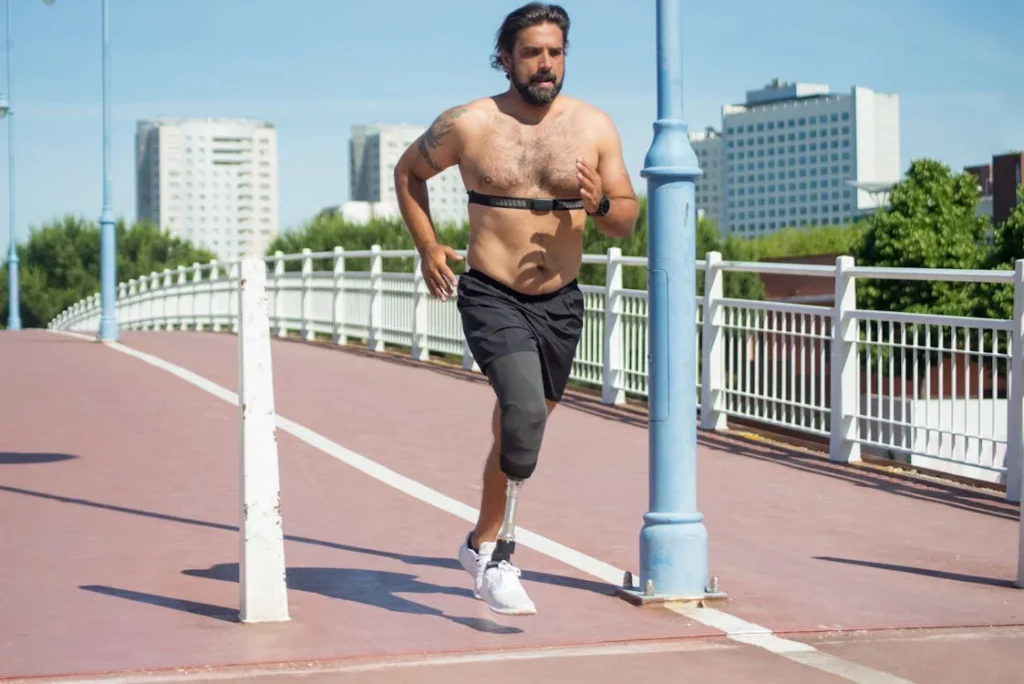
The Evolution of Myoelectric Prosthetics in Competitive Sports
Myoelectric prosthetics have come a long way in the past few decades. Early models were limited in response time, durability, and adaptability, making them less effective for high-performance sports.
Today, cutting-edge advancements in AI, robotics, and biomechanics have revolutionized these devices, allowing athletes to push their limits like never before.
Advancements in Sensor Technology for Improved Control
Modern myoelectric prosthetics now use advanced sensor arrays to detect muscle signals with greater accuracy. Earlier versions required strong, deliberate muscle contractions to activate movements, which could lead to fatigue during prolonged use.
Newer designs incorporate multi-channel electrodes that pick up even subtle muscle signals, allowing for faster, more precise control.
For athletes, this means better grip adjustments, smoother movement transitions, and less cognitive effort spent controlling the prosthetic.
In fast-paced sports like fencing or basketball, where reaction time is critical, these improvements allow athletes to respond to opponents in real-time without delays.
AI and Machine Learning for Adaptive Performance
Artificial intelligence is playing a key role in enhancing myoelectric prosthetic function. By using machine learning algorithms, prosthetics can now analyze an athlete’s movement patterns and adjust in real time.
For example, an AI-powered myoelectric leg can learn how an athlete runs, then automatically modify its stiffness and energy return based on terrain, speed, and force application.
This ensures a more natural, dynamic running motion, reducing the risk of injury while enhancing efficiency.
Similarly, AI-driven prosthetic arms used in weightlifting or rowing can adjust grip pressure and wrist rotation automatically, minimizing fatigue and preventing slippage under heavy loads.
Durability and Weather Resistance for Extreme Conditions
Competitive sports often expose athletes to extreme weather, impact, and environmental conditions. Older myoelectric prosthetics struggled with moisture, dust, and high-impact forces, limiting their use in rugged sports.
Today, advancements in carbon fiber casing, waterproofing, and reinforced internal components have made these prosthetics more durable and resistant to harsh environments.
This has opened new possibilities for adaptive athletes to compete in mountain biking, skiing, and even extreme endurance races without worrying about device failure.
Bionic Feedback: The Next Frontier
A significant area of development is bionic sensory feedback, where myoelectric prosthetics not only respond to muscle signals but also send touch sensations back to the athlete’s brain.
This technology, still in its early stages, has the potential to recreate the feeling of holding, gripping, and balancing objects, making prosthetics even more intuitive for competitive sports.
For example, a weightlifter using a bionic arm could “feel” the texture and weight of the barbell, allowing for better hand positioning and pressure control. A rock climber could sense the edges of a hold, improving their ability to navigate complex routes.
The Role of Customization in Athletic Performance
Every athlete has unique biomechanics, training styles, and sport-specific needs. The future of myoelectric prosthetics lies in hyper-personalized designs, where devices are tailored to individual muscle signals, limb proportions, and movement patterns.
At Robobionics, we believe that customization is key to unlocking true athletic potential. By working closely with prosthetists, engineers, and sports trainers, we ensure that each athlete gets a prosthetic that enhances their strengths and minimizes their limitations.
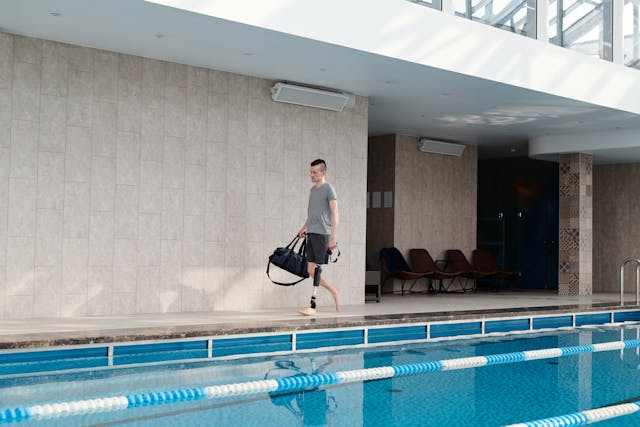
Training and Adapting to Myoelectric Prosthetics in Competitive Sports
Mastering a myoelectric prosthetic for sports requires more than just fitting the device—it demands consistent training, adaptation, and fine-tuning.
While these advanced prosthetics offer unparalleled control and movement, athletes must go through a structured learning process to optimize their performance.
The Learning Curve: Developing Muscle Control
One of the biggest adjustments when using a myoelectric prosthetic is learning to control movements through muscle signals.
Unlike mechanical prosthetics, which rely on physical force or external mechanisms, myoelectric limbs respond to electrical impulses from the muscles in the residual limb.
Athletes must first undergo muscle reconditioning, which involves strengthening and training the specific muscles that activate the prosthetic’s functions. This process can take weeks or months, depending on the sport and the complexity of movements required.
For example, a tennis player using a myoelectric arm must refine their ability to grip and release the racket with precision, ensuring that muscle signals do not unintentionally tighten or loosen the grip mid-play.
Similarly, a runner with a myoelectric leg must train their hip and thigh muscles to send consistent signals for stride control, ensuring smooth and balanced movement.
Sport-Specific Adaptations and Techniques
Each sport demands different movements, and myoelectric prosthetics must be adjusted accordingly.
For weightlifters, the focus is on grip strength calibration—ensuring the prosthetic applies enough force to hold heavy weights without overexerting the muscles. Some lifters use pre-set grip modes, where the prosthetic adjusts automatically based on the load being lifted.
For basketball players, myoelectric arms must allow for quick transitions between dribbling, passing, and shooting. Training involves reaction drills to improve response time and ensure the prosthetic’s grip pressure is adaptable to different movements.
For rock climbers, the prosthetic must offer precise finger and wrist control to grip holds of various shapes and textures. Athletes practice dynamic muscle activation, ensuring they can shift between grips without causing unintended disengagement.
Fine-Tuning Prosthetic Sensitivity for Competition
Myoelectric prosthetics allow for customizable sensitivity settings, meaning the level of muscle activation required to trigger movement can be adjusted. Competitive athletes often fine-tune their settings to match the demands of their sport.
For sports requiring explosive power—such as sprinting or shot put—athletes may opt for higher sensitivity, ensuring that minimal muscle effort results in maximum movement output.
For sports requiring precision and finesse—such as archery or golf—lower sensitivity settings help maintain steady, controlled movements, preventing unintended twitches from affecting performance.
Athletes work closely with prosthetists, sports trainers, and biomechanical engineers to ensure their prosthetic is perfectly calibrated for their playing style, strength level, and competitive needs.
Adapting to Real-World Competitive Scenarios
Training in a controlled environment is one thing, but adapting to live competition is another challenge entirely. Athletes must prepare for unexpected situations, such as weather changes, rapid movements, and opponent strategies.
For instance, a cyclist using a myoelectric arm must be able to shift gears quickly, even when navigating sharp turns or rough terrain.
Similarly, a boxer with a myoelectric arm must ensure their reaction time is on par with their opponent, maintaining balance and defensive positioning even under pressure.
Simulated competition drills, mental conditioning, and real-time prosthetic feedback analysis help athletes transition from practice to professional-level performance.
At Robobionics, we emphasize holistic training approaches that integrate physical conditioning, prosthetic calibration, and psychological preparation, ensuring athletes are fully equipped to excel in their chosen sport.
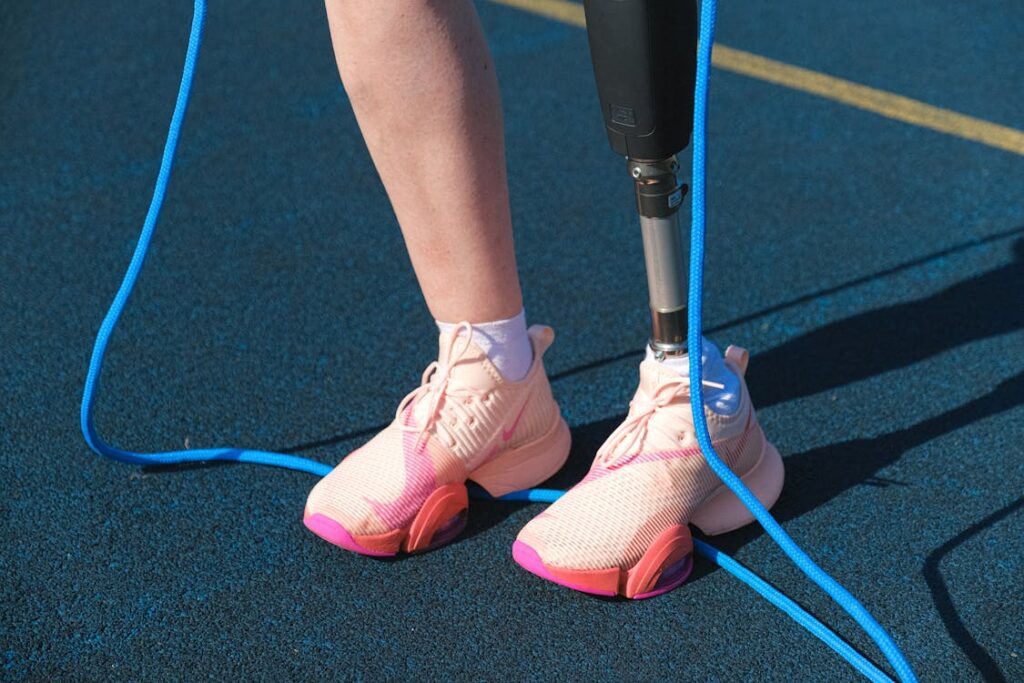
The Psychological Edge: Mental Conditioning for Athletes Using Myoelectric Prosthetics
Competing at a high level is not just about physical ability—it requires mental toughness, confidence, and resilience. For athletes using myoelectric prosthetics, the psychological aspect of performance is just as important as the physical.
Overcoming doubts, adapting to new technology, and maintaining focus under pressure all play a crucial role in achieving success.
Overcoming Self-Doubt and Mental Barriers
For many adaptive athletes, the journey begins with overcoming the perception of limitation.
Myoelectric prosthetics offer incredible functionality, but there is often a period of adjustment and trust-building before an athlete fully integrates the prosthetic into their movements.
Some athletes initially experience hesitation in high-stakes situations, fearing their prosthetic may not respond quickly enough. Others may struggle with the mental comparison to able-bodied competitors, feeling the pressure to prove themselves on the same level.
The key to overcoming these challenges lies in mental conditioning and self-belief. Athletes who train their mindset to focus on their strengths rather than their differences perform with greater confidence.
Visualization exercises, where athletes mentally rehearse movements, strategies, and competition scenarios, help reinforce positive performance patterns.
Developing Muscle-Mind Connection with Myoelectric Control
Unlike passive or mechanical prosthetics, myoelectric limbs require active brain engagement, as they respond to muscle signals in real time.
This means athletes must develop a strong muscle-mind connection, learning to activate the right muscle groups instinctively during high-speed play.
For example, a tennis player using a myoelectric arm must develop subconscious control over their grip, ensuring they instinctively apply the right amount of pressure for each shot.
A runner using a myoelectric leg must refine their stride rhythm and footstrike timing, training their muscles to trigger movements smoothly and without hesitation.
Neuroplasticity training—where the brain strengthens its connection to new movements—plays a vital role in helping athletes make their prosthetic feel like an extension of their body rather than an external device.
The more an athlete practices intuitive control, the less mental effort is required during competition.
Handling Pressure in High-Stakes Competitions
Competitive sports are full of high-pressure moments—a final sprint in a race, a crucial free throw in basketball, or a game-winning penalty kick in soccer. Athletes with myoelectric prosthetics must train their focus and composure to perform consistently under these conditions.
Techniques such as breath control, mindfulness, and pre-competition rituals help athletes stay calm and present, preventing nervous tension from affecting performance.
Many elite adaptive athletes also work with sports psychologists to develop strategies for staying mentally strong, particularly in environments where external distractions or stress could impact prosthetic control.
Building Confidence Through Experience and Small Wins
Confidence in using a myoelectric prosthetic doesn’t come overnight—it builds through experience, practice, and small victories. Each successful movement reinforces trust in the prosthetic, leading to greater consistency and precision over time.
Setting incremental goals—such as improving reaction speed, mastering a new technique, or maintaining focus under fatigue—keeps athletes motivated and engaged in their progress.
Celebrating these milestones creates a positive feedback loop, where confidence fuels better performance, which in turn reinforces self-belief.
At Robobionics, we emphasize the importance of both physical and mental preparation in helping athletes achieve their highest potential. A strong mind, paired with cutting-edge prosthetic technology, is the ultimate formula for success in competitive sports.
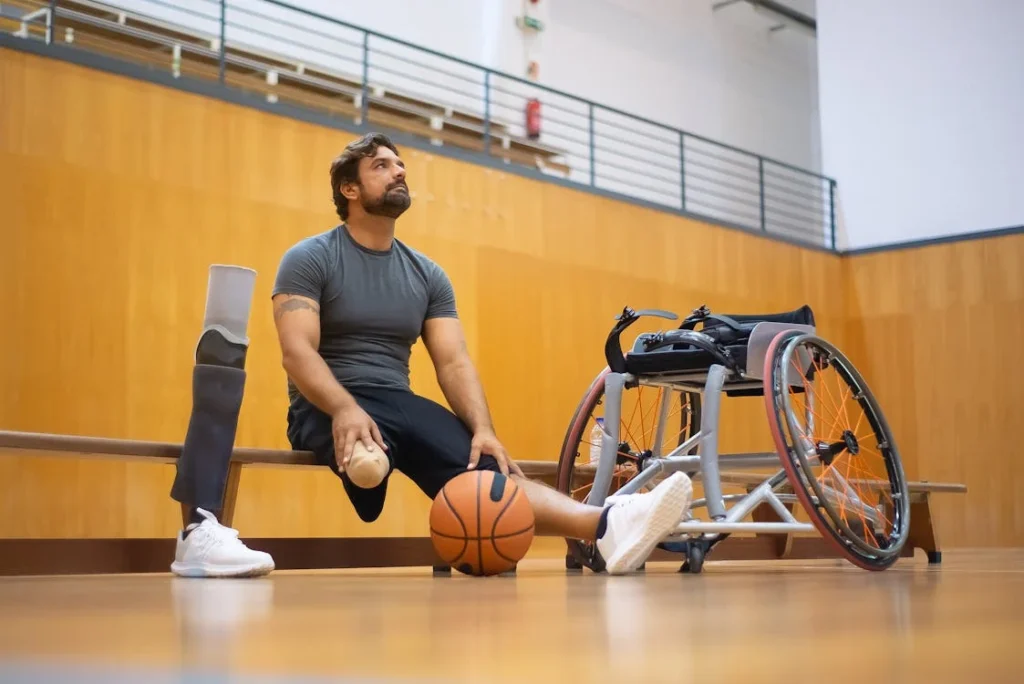
The Future of Myoelectric Prosthetics in Competitive Sports
Myoelectric prosthetics are already revolutionizing adaptive sports, but the future promises even greater advancements.
With rapid developments in artificial intelligence, neurotechnology, and biomimetic engineering, these prosthetics are becoming smarter, faster, and more adaptable than ever before.
Integration of AI for Real-Time Adaptation
Artificial intelligence is shaping the next generation of myoelectric prosthetics by enabling real-time movement adjustments based on an athlete’s biomechanics.
AI-powered prosthetics analyze data from muscle signals, force distribution, and movement patterns, allowing the device to anticipate and optimize an athlete’s performance.
For example, a runner’s myoelectric leg could automatically adjust joint stiffness and energy return based on terrain changes—absorbing impact on rocky trails or stiffening for explosive sprints.
A weightlifter’s prosthetic arm could use AI to instantly modify grip force, ensuring the barbell is held securely without unnecessary strain.
Brain-Computer Interfaces: The Next Step in Prosthetic Control
One of the most exciting developments in prosthetics is brain-computer interface (BCI) technology, where prosthetic limbs respond directly to brain signals, eliminating the need for muscle-based activation.
This breakthrough could allow even faster and more natural movement, giving adaptive athletes a competitive edge.
With BCI, an archer using a myoelectric arm could precisely control finger tension and release by simply thinking about it, achieving near-instant response times.
A rock climber could make split-second grip adjustments without actively contracting muscles, allowing for greater endurance and agility.
Ultra-Lightweight Materials for Enhanced Speed and Agility
Prosthetic limbs are becoming lighter and stronger with advancements in carbon fiber, graphene, and bioengineered polymers. These materials reduce overall weight while maintaining maximum durability, allowing athletes to move with greater speed and efficiency.
For sports like sprinting and gymnastics, where agility and fluid movement are critical, next-generation prosthetics will provide a near-seamless extension of the body, reducing energy loss and enhancing performance.
Adaptive Energy-Storage Systems for Explosive Power
Future myoelectric prosthetics may feature integrated energy-storage systems, where excess kinetic energy is captured and released when needed.
This could revolutionize jumping sports, such as basketball and long jump, by storing impact energy on landing and releasing it for greater lift-off.
Imagine a basketball player using a myoelectric leg that harnesses the force of their landing, allowing them to rebound higher on their next jump.
Or a long jumper whose prosthetic limb delivers extra propulsion at the perfect moment, extending their distance beyond what was previously possible.
Increased Accessibility and Customization for Athletes
As technology advances, myoelectric prosthetics are becoming more affordable and customizable, allowing more athletes to compete at elite levels.
3D printing technology is making it possible to create custom-fit prosthetics faster and at lower costs, while modular designs allow athletes to swap out components based on their specific sport’s demands.
At Robobionics, we are committed to staying at the forefront of these innovations, ensuring that adaptive athletes have access to the most advanced, high-performance prosthetics available.
As technology continues to evolve, the future of adaptive sports will see even greater integration between human ability and cutting-edge biomechanics, breaking down barriers and redefining what is possible.
Conclusion
Myoelectric prosthetics are transforming competitive sports, enabling athletes with limb loss to push boundaries, enhance performance, and compete at the highest levels. With precise muscle-controlled movements, real-time adaptability, and cutting-edge materials, these advanced prosthetics are bridging the gap between human potential and technology.
Athletes using myoelectric prosthetics are proving that limb loss is not a limitation—it’s an opportunity to innovate and redefine what’s possible. As artificial intelligence, brain-computer interfaces, and lightweight materials continue to evolve, the future of adaptive sports will only become more dynamic and inclusive.
At Robobionics, we are committed to empowering athletes with high-performance prosthetic solutions designed for competitive excellence. Whether you are a sprinter, weightlifter, climber, or fighter, the right prosthetic technology can help you achieve your goals and dominate your sport.
If you’re ready to experience the next generation of sports prosthetics, reach out to Robobionics today. Let’s build a future where no athlete is limited by their prosthetic—only by how far they are willing to go. Your journey to peak performance starts now.



